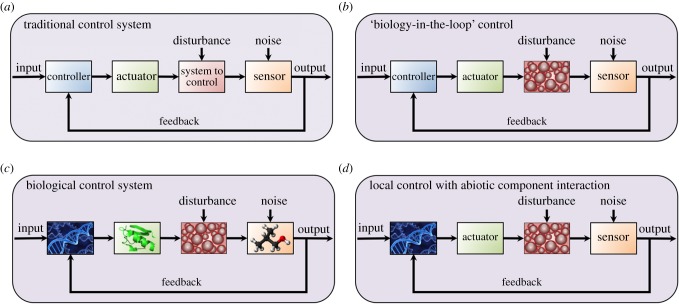Figure 2.
Synthetic biological control systems for use in space. (a) A traditional feedback control system consists of a controller, an actuator, a sensor and a system to be controlled, all arranged within a feedback loop. (b) ‘Biology-in-the-loop’ control refers to contemporary electromechanical (e.g. microfluidic or optical) techniques of externally controlling a biological system. (c) Challenge 5 moves towards a methodology that completely integrates biological controllers (perhaps based on gene regulatory networks), actuators (perhaps one or more proteins) and sensors (perhaps levels of chemicals of interest) with the biological system to be controlled (the control subchallenge). (d) Challenge 5 also includes the case where biological controllers and the systems to be controlled constitute separate biological subsystems that individually interact with abiotic sensors and actuators, all of which are part of a larger system, e.g. a hybrid robot (the artificial life subchallenge).

